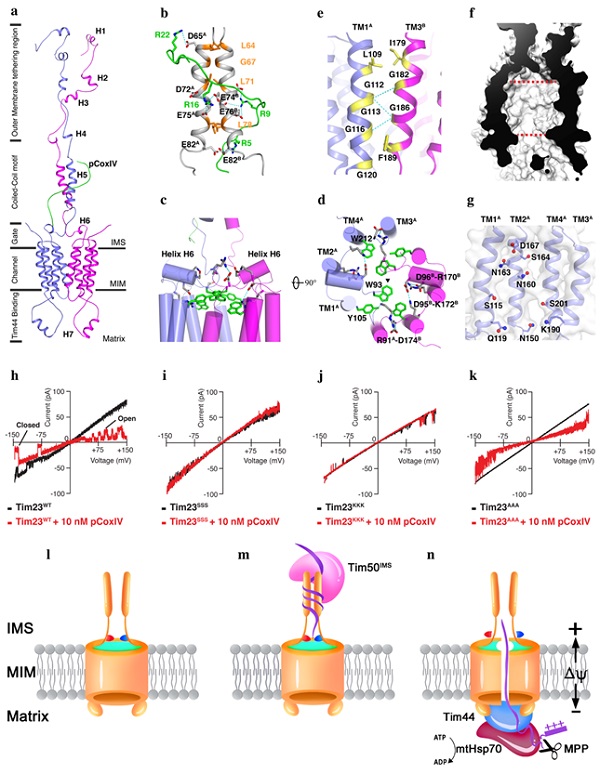Dec 28,2020|By
Recently, a research team led by Prof. WANG Junfeng and Dr. ZHOU Shu from the High Magnetic Field Laboratory, Hefei Institutes of Physical Science resolved the three-dimensional structure of the voltage-gated Tim23 channel in complex with a mitochondrial presequence peptide, using the method of solution-state NMR.
Most mitochondrial proteins are synthesized in the cytosol and transported into various mitochondrial subcompartments in a process that is mediated by intricate multimeric machineries. Tim23 protein, the key component of the TIM23 complex forming a channel in the mitochondrial inner membrane, is believed to recognize and translocate precursor proteins into the mitochondrial matrix or to release them into the mitochondrial inner membrane.
In recent years, research on the function of Tim23 chann--el has made great progress, but the three-dimensional structure of the Tim23 channel was unknown.
In this study, researchers report the solution NMR structure of Tim23 channel complexed with a mitochondrial presequence peptide.
The structure shows that presequence binds to a coiled-coil motif in the mitochondrial intermembrane space via electrostatic forces. A short helix containing salt bridges serve as a voltage sensor and aromatic rings at the membrane interface serve as a lock to operate channel gating, which is validated by electrophysiological analysis on the structure-based sequence variants. Furthermore, a hydrophilic pore is identified in the inner membrane.
The study offers mechanistic insight into how a voltage-sensitive channel transfers precursor protein into the mitochondrial matrix.
The results have been published on journal Cell Research.
This study was supported by grants from the Ministry of Science and Technology of China andthe National Natural Science Foundation of China, and funded by theHorizon 2020 program of the European Commission.
The NMR experiment was supported by the High Magnetic Field Laboratory of Chinese Academy of Sciences and the Biomolecular Magnetic Resonance Center at University of Frank---------furt.

Cartoon representation of the Tim23-pCoxIV structure (a-g); electrophysiological analysis of the Tim23 wild type and Tim23 sequence variant channels in the absence or presence of pCoxIV (h-j); the proposed mechanism whereby the Tim23 channel transports precursor proteins into the mitochondrial matrix (l-n).
Attachments Download: